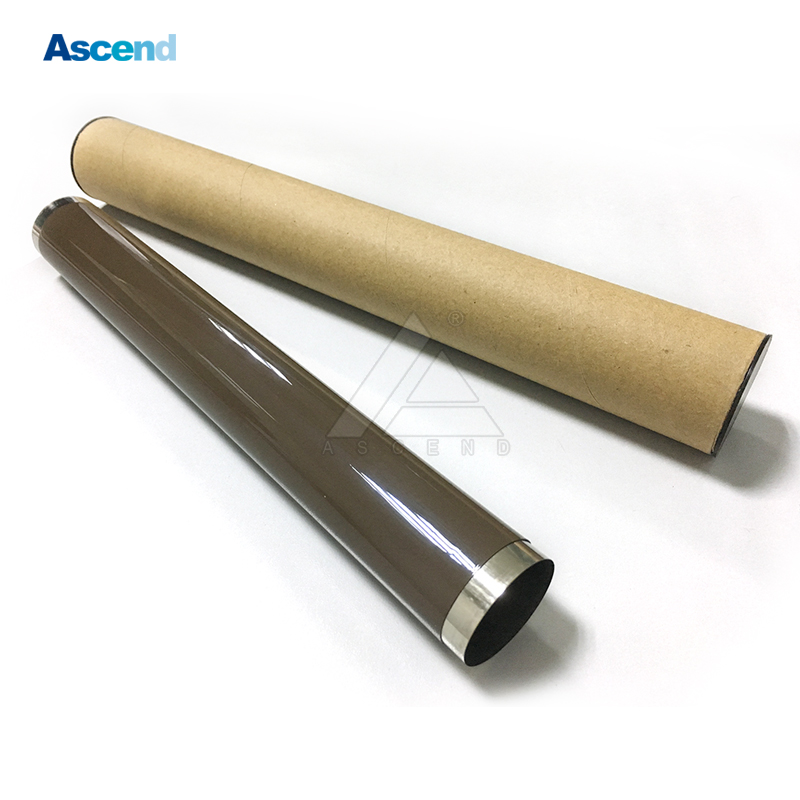Inductive heating There is a third technology used for heating the sleeve. In a few printers, inductive heaters are used. This is where they use the electromagnetic induction as a heat source on a metal based sleeve. Not many printers use this technology.
Instant on technology and inductive heating elements can be mated with a few types of sleeves:
Many slower and older printers and laser printers have polyimide sleeves. Polyimide sleeves are easier to manufacture and are more forgiving than the metal counter parts, resembling thin plastic tubes.
Nickel and stainless steel belts are much better at transferring heat than polyimide sleeves. They are more susceptible to coating failure and damage than polyimide sleeves. Many of the faster output printers like the HP 4250 and 4015 contain metal-based sleeves. There are also printers that contain silicone coated metal sleeves. This silicone coating does a few things. First, it provides a better surface for fusing,because you can get more uniform pressure.
It lessens the impact on the metal base material, allowing for longer life. And since silicone coated rollers usually have a sleeve instead of spray coating for the outer most layer, the sleeves coating will also last longer. There are also silicone coated aluminum rollers. These are found on high speed business HP laser printers. Silicone coated rollers are used here primarily to lessen the chance of image defects. They are also for better fusing performance. All sleeves and rollers have a coating of some sort to prevent toner from sticking to them. Without this layer, a fuser would not work very well as toner would stick to the roller or sleeve. Usually this coating is either a PFTE spray coating, or a silicone sleeve. This sleeve can be seen on some OEM rollers, such as the HP LaserJet 8100 UFR. Sleeve differences Each sleeve/roller is made for a specific application. This means that although sleeves are the same size or can be modified to fit in other fusers, doesn’t mean you should. Other considerations need to be taken into affect. Some sleeves are conductive on the inside, others are not. Some sleeves are thicker, while others have varying curvatures. All these factors can play into the overall success of a fuser’s performance. Toner melts at a specified temperature; if it’s too cold, it will not fuse to the page properly. If it’s too hot, it will stick to the sleeve and cause ghosting. Add in the other things that the fuser is required to fuse, and this makes it even more complex. Labels, envelopes, thicker media, and transparencies add yet another list of complexity tothe proper fusing of media. Some HP fusers have envelope tabs while others automatically separate the LPR and UFR to prevent wrinkles with envelopes. Labels, envelopes, and thicker media require more heat to fuse the image properly. This is due to the thicker media absorbing more heat than standard media.
As you can see, a printer these days is now being used for more than just printing on standard office paper. There are many different tasks and the printer has to know what settings to run at in order to properly fuse the image. This is why having the correct paper settings on the machine is very important to the operation of the printer. Back in the days of the SX and EX machines, you didn’t need to specify paper types. The aluminum roller could supply more than enough heat and it ran slow enough to deal with the varying thickness media. The newer, instant on technology printers need to be told they are running thicker media so it can turn up the heat and slow down the print speed. |



